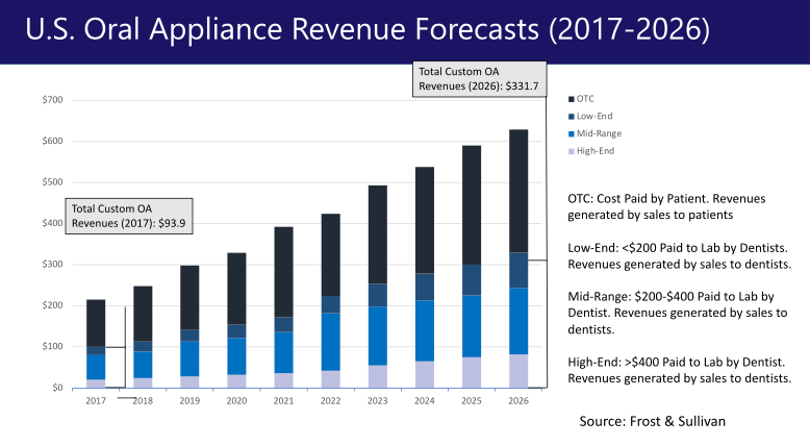
Don’t Skip the OUTLINE
You do not rise to the level of your goals. You fall to the level of your systems.” —James Clear
 Previously I shared a business framework called G.O. D.E.E.P. and a few days ago, I went beneath the surface on the ‘G’ in that acronym which stands for “Generate a Vision.” Go read that real quick and come back here to learn about the next step, i.e. Outline the Path.
Previously I shared a business framework called G.O. D.E.E.P. and a few days ago, I went beneath the surface on the ‘G’ in that acronym which stands for “Generate a Vision.” Go read that real quick and come back here to learn about the next step, i.e. Outline the Path.
Your team doesn’t know that you bought new medical billing software until the company calls to schedule training. Who’s using it? How are they using it? You did mention it, didn’t you? Maybe not. They don’t know how it’s supposed to fit into their already busy days. What are they supposed to stop doing to free up the bandwidth to take this on?
What are the goals? What is the plan?
I encountered this ad nauseam when I ran a DSM software company. Doctors bought the software with high hopes for higher profits from a new procedure needed by so many patients. Then charged into the office the follo

wing Monday only to get deluged with demands on their time. At best, the dentist makes a disjointed attempt to get their team onboard. At worst, they forget about it by the time the second patient is in the chair.
They didn’t understand the vision and they definitely didn’t see the outline of the path forward. It’s like asking the team to be Clark Griswold and Cousin Eddie when they lost a nest egg playing ‘Guess What Number I’m Thinking’ in Vegas Vacation. We know our why. It’s time to shift gears and focus on the how. Start by outlining the path and setting objectives.
OUTLINE = CHECKLIST = MAP
In Checklist Manifesto, Atul Gawande, MD uses a “day-in-the-life” snapshot to emphasize the complex demands on a physician today. One physician. Twelve months. The patients seen in that interval have 250 primary diseases with 900 other active medical issues that must be considered.
As a DSM practitioner, the maladies you’re dealing with are different, but you’re slammed. Like Dr. Gawande, you’re interrupted continually with demands on your time, attention, and expertise.
Later, Dr. Gawande writes that more than 150,000 patients die each year post-surgery. He devotes the remainder of the chapter to underscore the impact a basic five-point pre-surgery checklist had on post-surgery infections. In more than 33% of surgeries monitored, at least one of these steps was skipped. After instituting the checklists—infection rates plummeted from 11% to 0. After one year, it’s estimated that 43 infections and 8 deaths were avoided, and millions of dollars were saved. All from emphasizing a simple, five-point checklist. If they can save lives with lists, you can, too.
BULLET POINT EXTRAVAGANZA
We’re going to outline the path to success. The vision was macro. We’re going micro now. Deep into the weeds. Who’s going to assist with sleep cases? How will you handle medical billing for treatment?
What about sleep testing? Who will you refer patients to for testing? How will you shore up the likelihood that those patients will come back to you when OAT is appropriate? Will you buy and dispense your own units? Who will interpret and diagnose? Will you use a service? How will you get new patients? Who will manage the financial discussion? What will it sound like?
Everyone needs to know their position, the process, and the expectations. The “Who’s-on-first, what’s-on-second, I-don’t-know-is-on-third” nonsense is the off-ramp to bail on DSM. Division of labor. Expectations. Accountability. These must be crystal clear.
List all the steps and processes that come to mind, free-form, freestyle. Just go. You’re not looking for structure now. Just pray and spray those ideas out there. If your practice is just getting into sleep, your list might look something like this (abbreviated for this article):
- How to get patients
- Which medical billing company and who sends them files?
- Sleep testing – buy or use company?
- Who’s the sleep champion?
- Hire a new assistant or assign to Michelle?
- How will the front desk answer the phone?
- Look into referrals from ENTs across the street?
- Can Lisa learn enough about sleep to market to MDs?
This example is not an exhaustive list, but it has some of the common items that come up with many practices.
Next, write each item at the top of its own sheet of paper, or give it a first-level bullet point if you’re using a Word Doc. Then create sub-bullets for each item and sub-sub-bullets. These second and third-level bullets should get increasingly granular. Dive deep, like Mariana Trench deep from the main bullet. Don’t think about it too much. Just keep writing.
Your list might look something like this:
- How to get patients
- Get team trained on signs and symptoms
- Online training?
- Go to a course?
- Contact company for in-service?
- Screen all hygiene patients
- Ask Dr. John Tucker which forms she uses
- Ensure new AND existing patients complete the form
- Get patient brochures
-
-
- Have April order from the appliance labs?
-
-
-
- Make our own?
- Buy from Awaken2Sleep?
-
- What is protocol if we see signs/symptoms?
- How will we prevent schedule falling behind?
- Who talks about it with patients?
- Me?
- RDH?
- Sleep champ?
- What is the script?
- SAY:
- Research shows …
- Have you had a home sleep test?
- What treatment have you previously tried?
- DON’T SAY:
- We can cure sleep apnea
- CPAP is bad
- Don’t quote fees over the phone
- SAY:
Your outlines probably won’t look like turn-by-turn GPS instructions. Your practice is unique, but these suggestions are like a well-worn path. You can stray from it a bit if you see something interesting, but keep the path in sight. E. L. Doctorow said the following about writing, but it’s relevant here, too: “… [it’s] like driving a car at night in the fog. You can only see as far as the headlights, but you can make the whole trip that way.”
You will get there, but you can’t go alone. Next time we’ll discuss Step 3: DELEGATE.
If you’re interested in a deeper dive of the OUTLINE process including how to set S.M.A.R.T. goals for your sleep team, then pick up a copy of my new book TRANSFORM DENTAL SLEEP: The Step-by-Step Guide to Doubling Your Sleep Patients, Increasing Physician Referrals, Simplifying Processes, and Improving Your Life.




